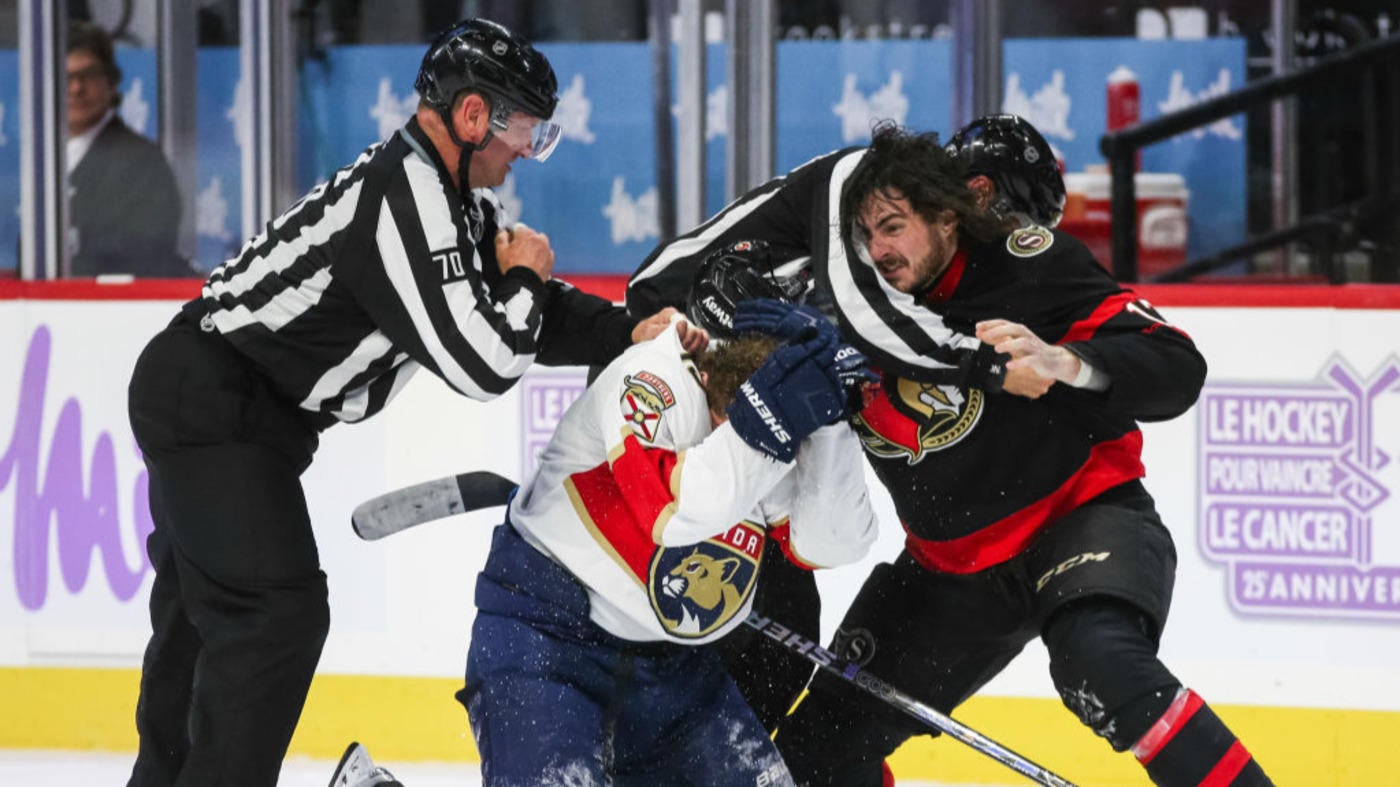
In a recent Panthers-Senators game, a controversial incident unfolded on the ice, leaving fans and players alike stunned. The referee, in a surprising turn of events, issued misconduct penalties to every player on the ice, igniting a massive scrum that escalated tensions between the two teams. This unprecedented decision by the referee has sparked intense debate and raised questions about the role of officials in maintaining order during hockey games.
The incident occurred midway through the second period when a skirmish broke out between two players from opposing teams. As the referee attempted to intervene and restore order, he made the astonishing decision to hand out misconduct penalties to every player on the ice, regardless of their involvement in the initial altercation. This unexpected move left both teams bewildered and frustrated, leading to a chaotic scene as players from both sides engaged in a heated confrontation.
The referee’s decision to issue misconducts to all players has been met with mixed reactions. Supporters argue that such a drastic measure was necessary to send a strong message and maintain control over the game. They believe that by punishing every player, regardless of their involvement, the referee aimed to deter any further misconduct and prevent the situation from escalating.
However, critics argue that this decision was excessive and lacked fairness. They contend that penalizing players who were not directly involved in the initial incident undermines the principles of justice and sportsmanship. Additionally, some argue that the referee’s action only served to further fuel tensions between the teams, as players felt unfairly targeted and retaliated against one another.
The incident has also reignited discussions about the role of referees in hockey games. Referees are entrusted with maintaining order, enforcing rules, and ensuring fair play. Their decisions can significantly impact the outcome of a game and shape players’ behavior on the ice. In this case, the referee’s choice to issue misconduct penalties to every player raises questions about the appropriate use of authority and the potential consequences of such actions.
The National Hockey League (NHL) has a responsibility to address this incident and provide clarity on the matter. It is crucial for the league to review the referee’s decision and determine whether it aligns with the established guidelines and principles of the game. This incident serves as an opportunity for the NHL to reevaluate its policies and provide clearer instructions to referees on how to handle similar situations in the future.
Furthermore, this incident highlights the need for improved communication between referees, players, and coaches. Clear and concise explanations from officials regarding their decisions can help prevent misunderstandings and reduce tensions on the ice. Open dialogue between all parties involved can contribute to a more harmonious and respectful environment during games.
In conclusion, the referee’s decision to issue misconduct penalties to every player on the ice during the Panthers-Senators game has sparked a massive scrum and ignited a debate about the role of officials in hockey. While some argue that this decision was necessary to maintain control, others believe it was excessive and lacked fairness. The incident calls for a thorough review by the NHL and emphasizes the importance of improved communication between referees, players, and coaches. Ultimately, this incident serves as a reminder of the challenges faced by officials in maintaining order and fairness in high-intensity sports like hockey.
